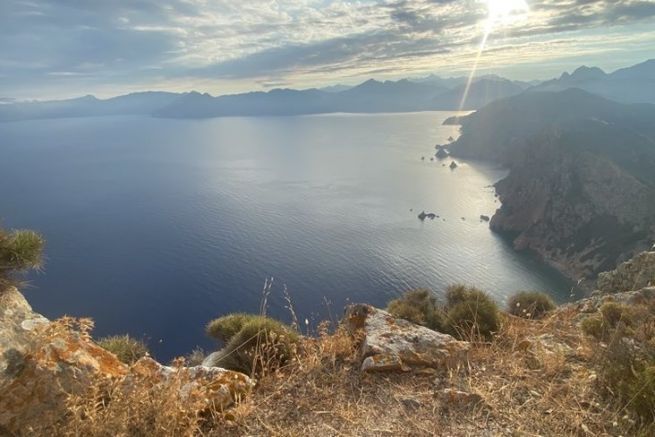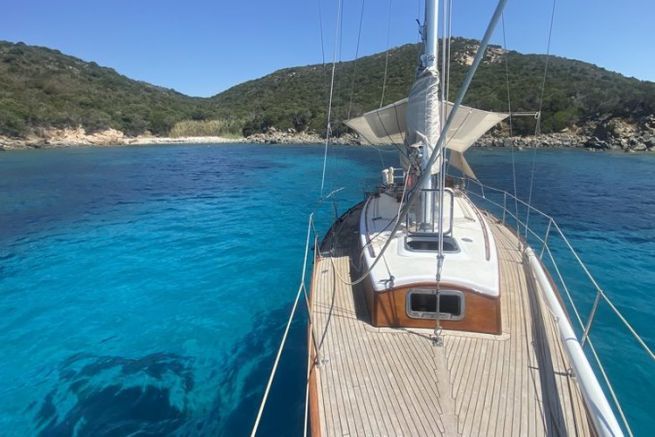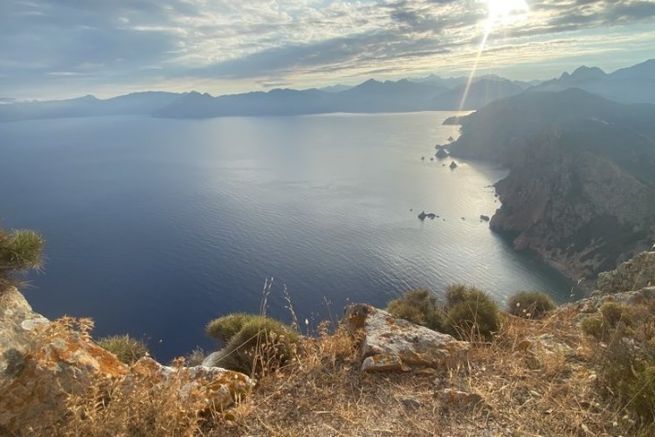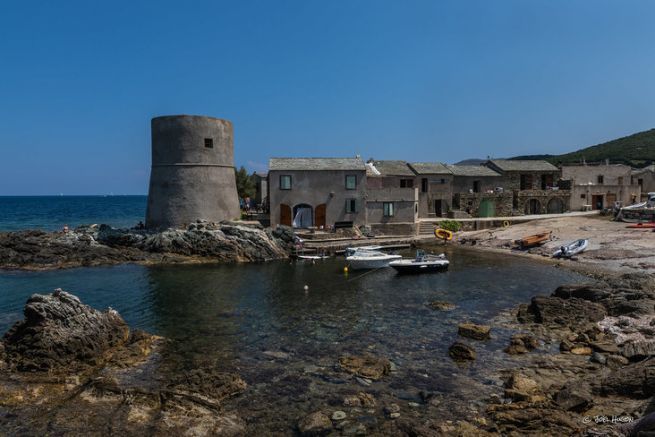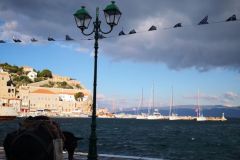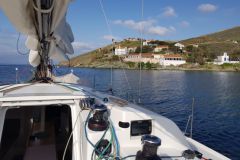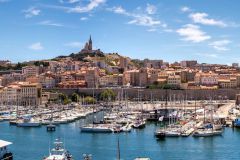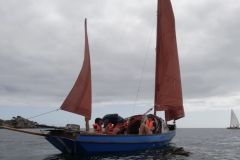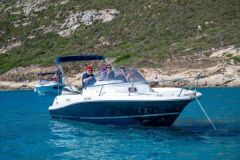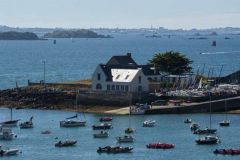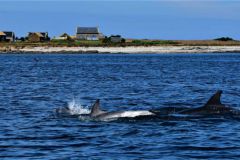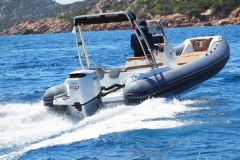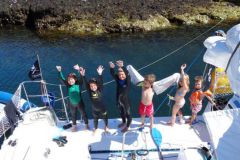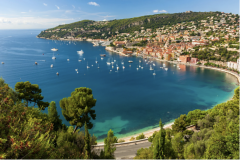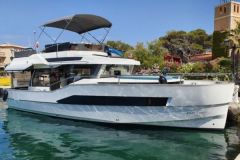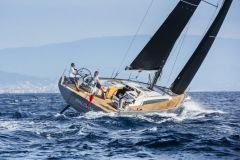Corsica is full of superb natural sites to discover during a cruise. To cruise along Corsica is to discover this magnificent island off the beaten track, to be amazed by the sheer cliffs, the deep coves and the islets bathed in an emerald sea.
There are three main areas of navigation:
- From Bonifacio to Ajaccio
- From Ajaccio to Calvi
- From Calvi to the Giraglia
We will tackle them one after the other, encouraging you to discover the little corners of paradise. You have the program, let's go!
Here is the continuation of our journey on the W coast of Corsica.
From Ajaccio to Calvi
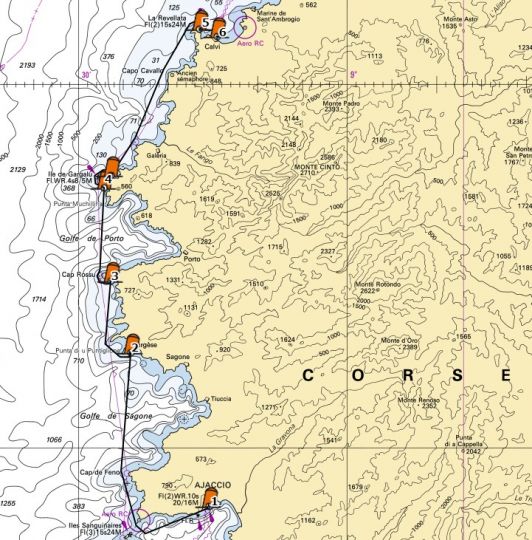
Ajaccio - The Sanguinaires
We left Ajaccio in our wake and headed for Cargese through the Sanguinaires pass between the Paratta point and the Porri island. This navigation does not present any particular difficulty. Count on 4 to 5 hours to reach our destination.
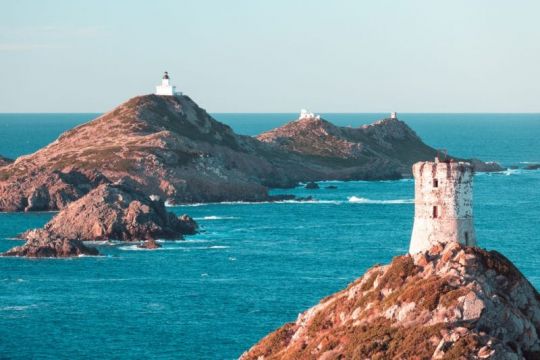
Cargèse or Carghiese
The village is located on the "Punta di Cargese", at an altitude of about 100 meters on a promontory at the northern end of the Gulf of Sagone. It is one of the few villages of the island located on the coast.
It is dominated by the bell towers of its two remarkable Byzantine and Latin churches, testimony to the settlement of a Greek colony in the 17th century.

Gulf of Porto
Listed as a UNESCO World Heritage Site, the Gulf of Porto is splendid with its red granite cliffs overlooking the sea. It concentrates the remarkable sites of this west coast: La cala di Palu, the Capo Rosso, the calanques of Piana in its southern part and Girolata and the Scandola reserve in its northern part. It is a cruise program in itself.
La Cala di Palu
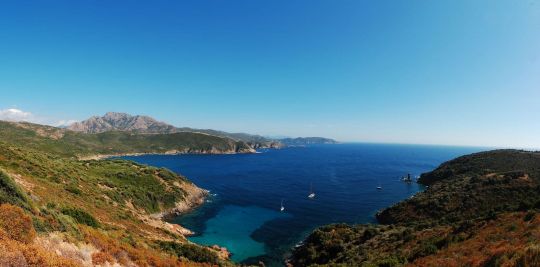
The site is wild and of great beauty. A rock detached from the shore forms a superb stone column. The anchorage is frequented by Mistral, as it is particularly well sheltered. The sandy bottom ensures a good anchorage.
Capo Rosso - The creeks of Piana
The bypass of Capo Rosso is not difficult, so let's go to Piana for the highlight of the day, if possible at sunset. Because it is at this moment that the granite takes on remarkable orange-red tones. Rocky heaps, peaks, mineral sculptures, needles and cliffs all in red granite overhang the sea. The colors are magnificent and what a contrast with the blue of the sea!
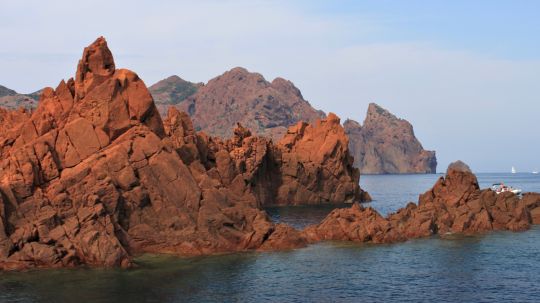
The cliffs are full of tafoni (holes) and basaltic organs, volcanic conglomerates with multicolored colors.
The meeting of the red porphyry massif with its tormented reliefs with the deep blue of the sky and the sea is really amazing...
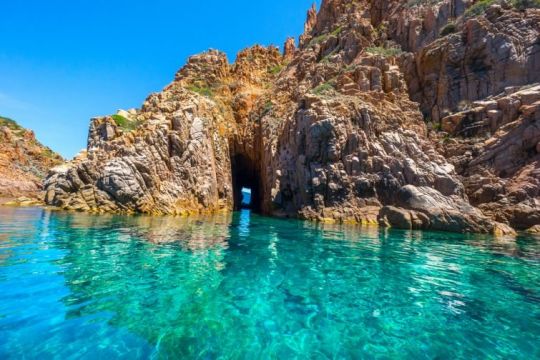
The Girolata or Ghjirulata and the Scandola reserve
Since the time we wanted to go there, we were eager to discover this western part of Corsica, classified as a UNESCO World Heritage Site!
Let's start with a small detour to Girolata for a sighting and certainly a stopover for the night. Only accessible by boat (or on foot, because there is no road), the port opens the road to the Scandola Reserve.
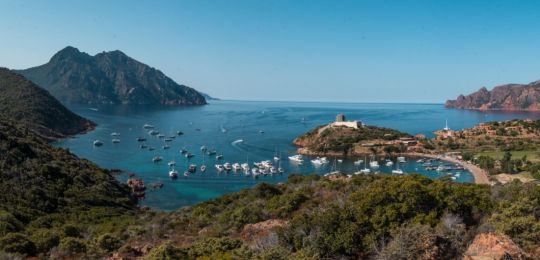
The Scandola Reserve is the first maritime and terrestrial nature reserve, created in France in 1975 and which extends over 900 ha of land and 1000 ha of sea bed. It is one of the most closely monitored scientific areas in Europe.
The richness of its fauna and flora is exceptional and everything is done to preserve the site. Starting with the mooring of ships.
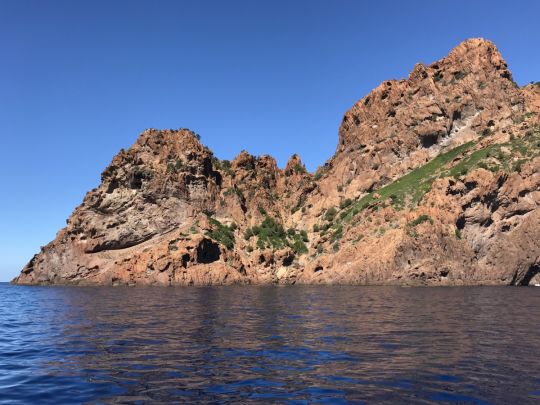
Only the bays of Solana and Elbo located on both sides of the "Punta Palazzu" are authorized for daytime anchoring. Hence the idea of anchoring in the port of Girolata for the night..
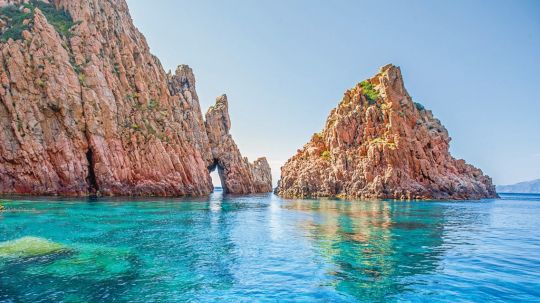
La Revellata
The Revellata peninsula has been maintained in its natural state under the protection of the Conservatoire du Littoral. The peninsula has thus preserved the richness of its sea bed, as well as the wild character of its scrub and its cliffs. It is thus a stopover not to be missed before reaching Calvi.
A real underwater sanctuary, it is one of the most famous diving spots in Corsica: gorgonians, red coral, groupers, moray eels... find here their favorite spots that make divers happy. All the diversity of the Corsican seabed is concentrated here. It's a pity not to stop there
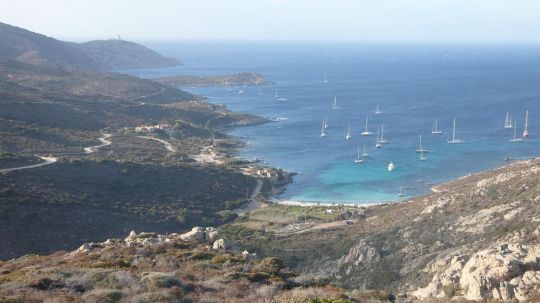
Anchoring on sand and sea grass. So we put the anchor on the sand to avoid damaging the seaweed. The Revellata lighthouse, top left on the picture, also called Calvi lighthouse, was built on the rocky point of Revellata and put into service in 1844. It marks the area from Ile Rousse in the north to the Gulf of Girolata in the south.
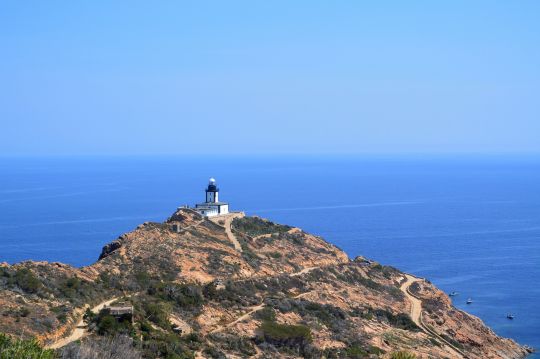
Calvi
We pass the Revellata point, dominated by its lighthouse and the citadel of Calvi appears on a mountainous background!
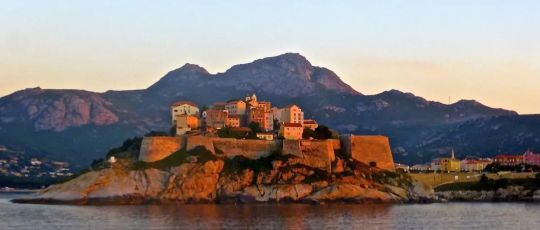
The citadel dates from the 13th century, but the site was occupied and fortified long before that time.
The anchorage was already frequented by the Phoenicians 500 years before Christ, and later by the Greeks. The Romans landed there and established a trading post and stayed there until the Vandals destroyed the colony in the 5th century... The Genoese citadel, like a jewel box set on the water, looks out over the Monte Grossu massifs which reflect their shadow on the sea.
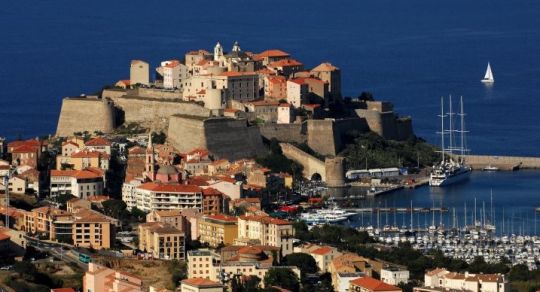
Then, strolling through the narrow streets of the city, old stones, small stores and restaurant terraces await us under the protection of Saint Mary.
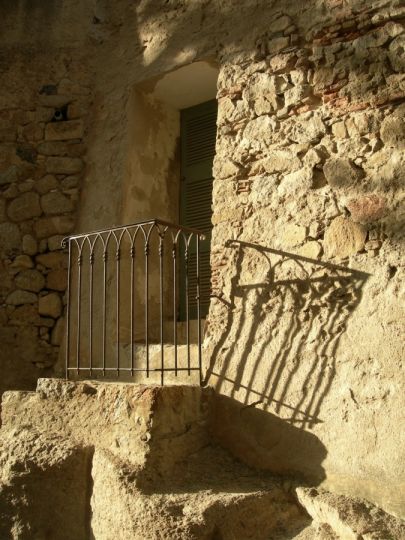
In our next cruise we will go from Calvi to the Corsican Cape through the Agriates desert, the vineyards of Saint-Florent and many other small heavenly places to come and anchor one evening in the Sainte-Marie cove on the Giraglia island.

 /
/ 